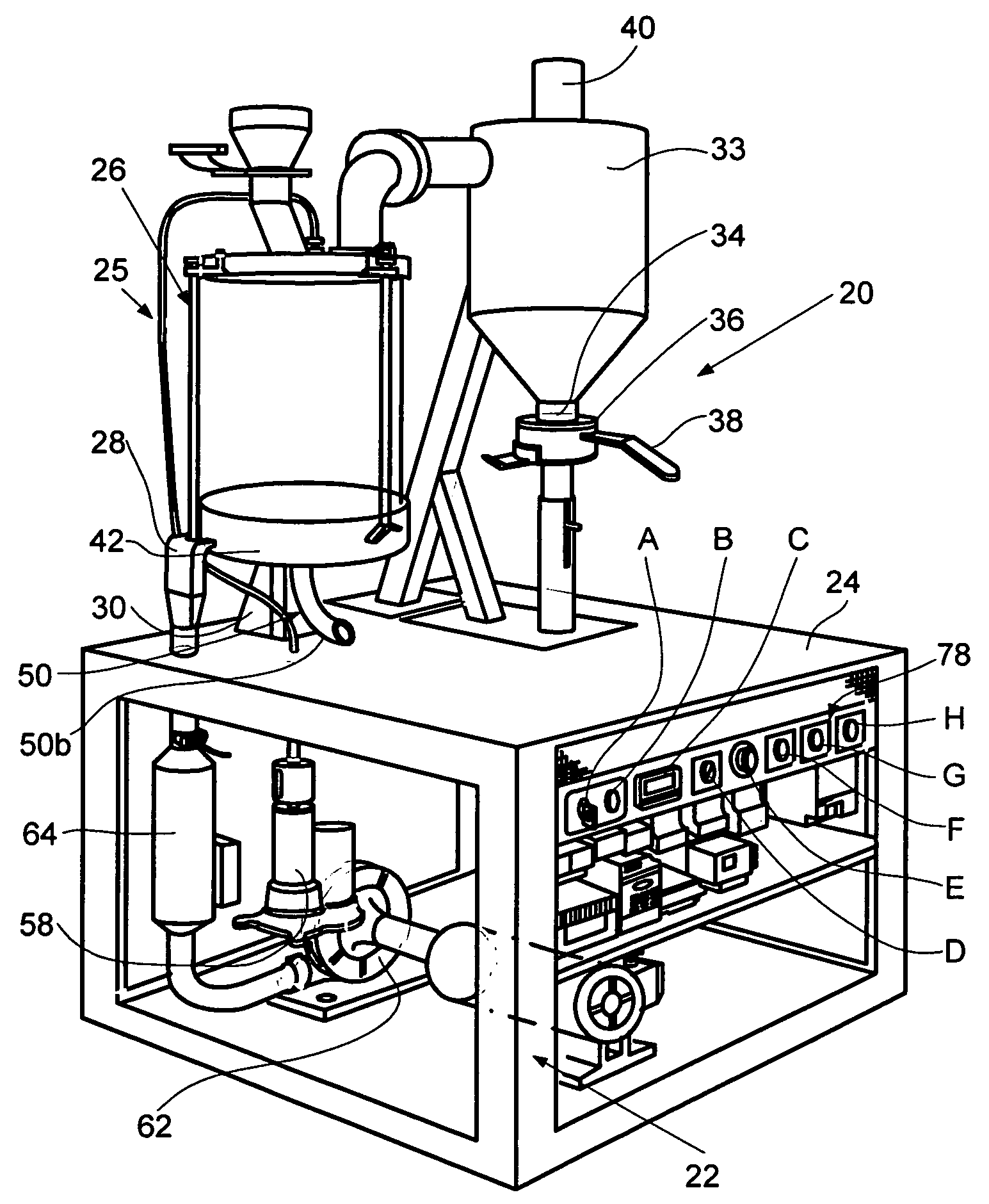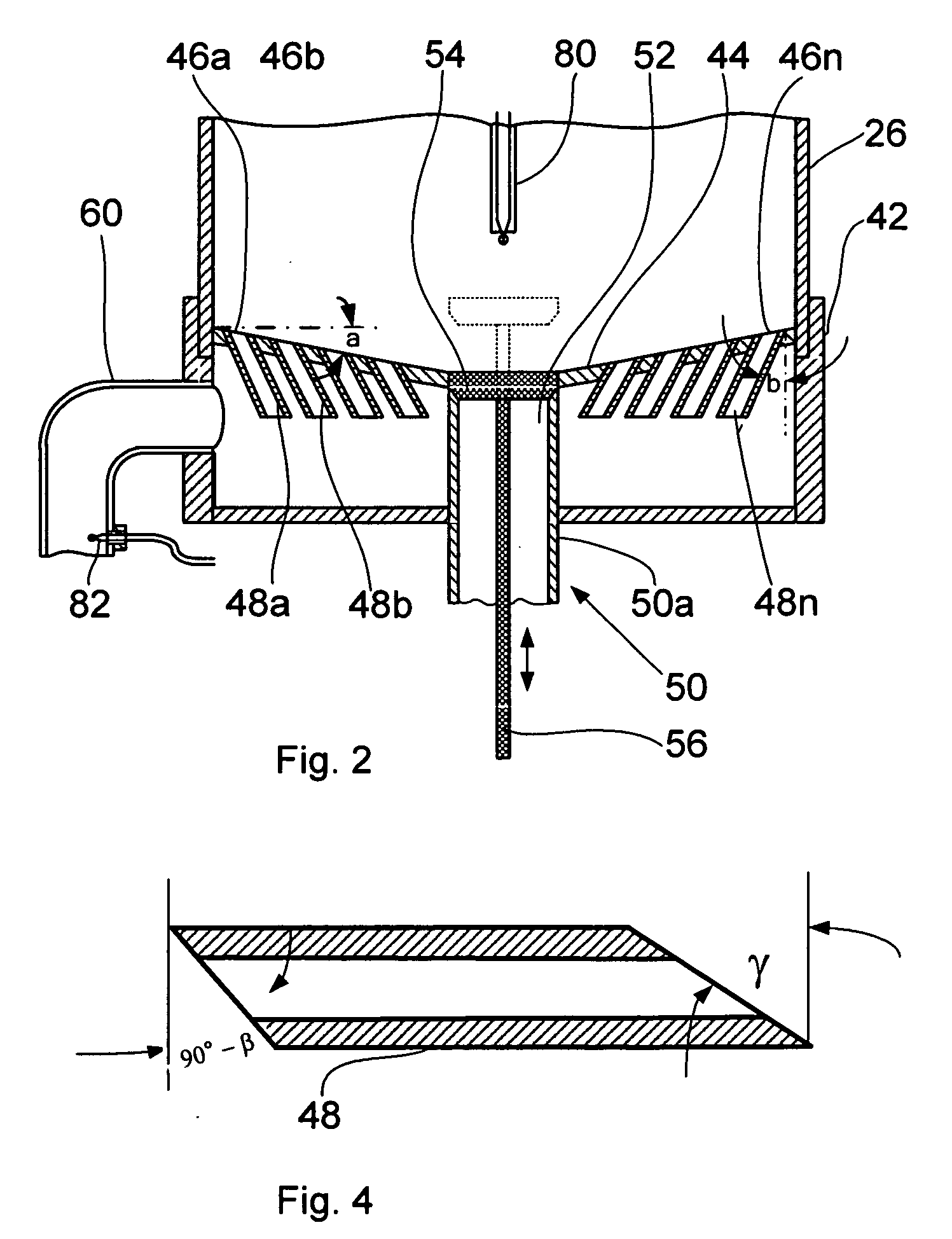Coffee bean roasting apparatus and method of roasting coffee beans
a coffee bean and roasting apparatus technology, applied in the field of coffee bean roasting apparatus and method, can solve the problems of difficult control, start losing flavor, and complex roasting process, and achieve uniform heating of bean mass, efficient and uniform heat transfer, and uniform pyrolysis
- Summary
- Abstract
- Description
- Claims
- Application Information
AI Technical Summary
Benefits of technology
Problems solved by technology
Method used
Image
Examples
Embodiment Construction
[0047]A general three-dimensional view of a coffee bean roasting apparatus 20 of the invention is shown in FIG. 1. It can be seen that the apparatus consists of a hollow rectangular base frame 22 that supports main functional units and devices on its top side 24 and retains all the drives and control devices inside.
[0048]The main functional units and devices are comprised of a coffee bean treating unit 25 that consists of the following components: a cylindrical roast chamber 26 made from a transparent heat-resistant material such as a borosilicate glass, which is supported on the base-frame top 24 by a pair of stands 28 and 30; a roast chamber plenum 42 located in the lower part of the coffee bean treating unit 25, which is shown in more detail in FIG. 2; and a circular distribution plate 44 between the cylindrical roast chamber 26 and the roast chamber plenum 42. FIG. 2 is a sectional view through the roast chamber plenum 42 shown on a larger scale than FIG. 1. The control block di...
PUM
 Login to View More
Login to View More Abstract
Description
Claims
Application Information
 Login to View More
Login to View More - R&D
- Intellectual Property
- Life Sciences
- Materials
- Tech Scout
- Unparalleled Data Quality
- Higher Quality Content
- 60% Fewer Hallucinations
Browse by: Latest US Patents, China's latest patents, Technical Efficacy Thesaurus, Application Domain, Technology Topic, Popular Technical Reports.
© 2025 PatSnap. All rights reserved.Legal|Privacy policy|Modern Slavery Act Transparency Statement|Sitemap|About US| Contact US: help@patsnap.com



